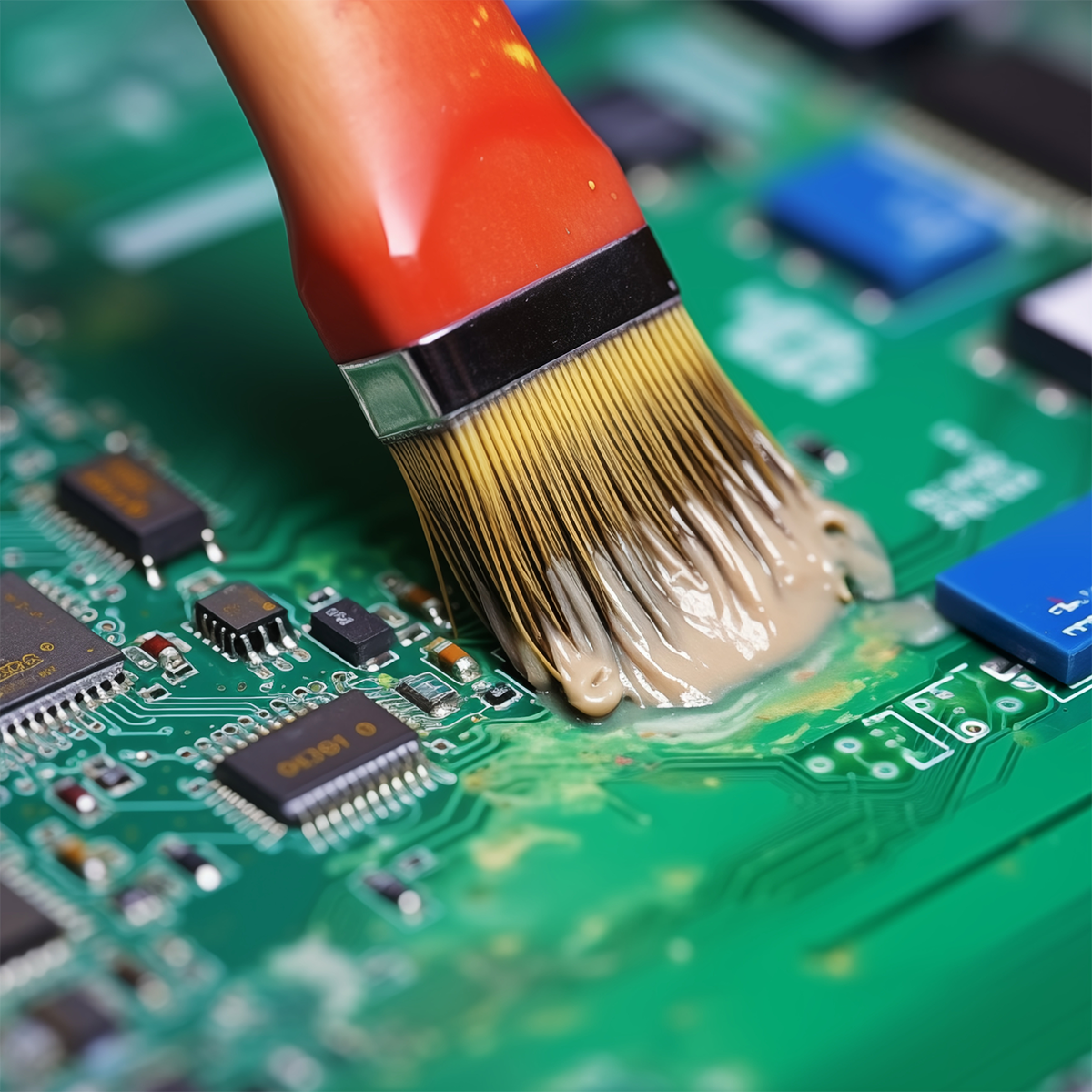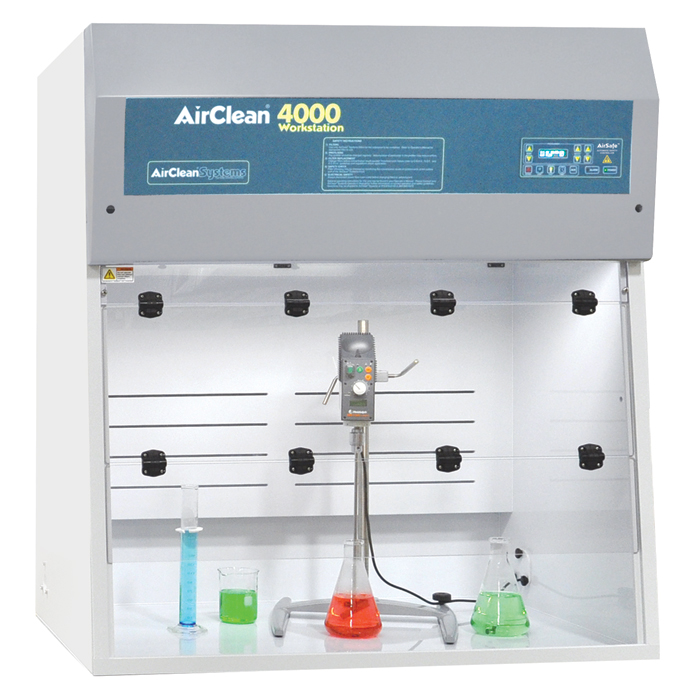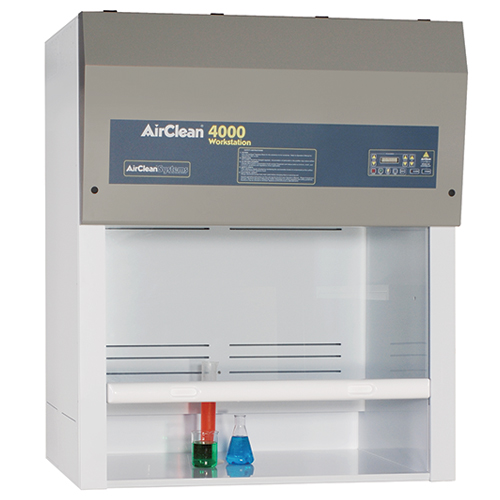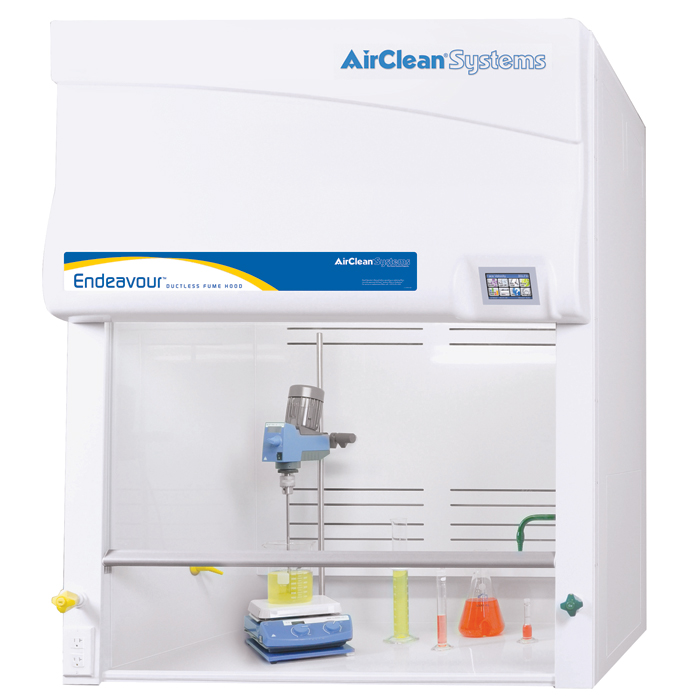
Conformal Coatings
Conformal coatings protect printed circuit boards (PCBs) from damaging environmental conditions such as temperature, moisture/water, salt, solvents, and abrasion. The use of conformal coatings spans many industries, including manufacturing and production, engineering, automotive, aerospace, and lighting. Traditional conformal coatings are resin-based one-part systems. The coatings are often diluted with solvent and applied to the circuit board by automated or manual spraying, dipping, or brushing. Following application, conformal coatings are left to cure and harden. Depending on the coating, you may use evaporative curing, when the solvent evaporates to promote hardening, or use moisture curing, when the coating reacts with moisture in the air. Heat and ultraviolet (UV) curing are often used as secondary curing mechanisms in addition to evaporative or moisture curing.
Types of conformal coatings
There are six types of conformal coating, with each categorized by their composition and resistance properties. Hybrid resins with the desired properties of multiple coatings may be created by mixing two or more coating types.
Acrylic Resin is considered one of the most basic and economical conformal coatings. These coatings provide a fair amount of moisture and abrasion protection, cure quickly, and are easily removed for repairs or rework using solvents. However, their ease of removal is also their biggest drawback because they do not provide any resistance to solvents or solvent vapors.
Silicone Resins provide excellent temperature protection and good chemical, moisture, vibration, and salt resistance. Another added benefit is that silicone resin is flexible, which prevents cracking due to the expansion and compression of the circuit board following exposure to warmer or cooler temperatures. Unlike acrylic resins, silicone resin-based conformal coatings are difficult to remove, even with solvents.
Urethane or Polyurethane Resin provides excellent moisture, chemical, solvent, and abrasion resistance. Like silicone, it is difficult to remove because it is solvent-resistant. These coatings are often used in aerospace applications to protect the PCB from fuel vapors.
Epoxy Conformal Coating is a two-part nontraditional coating that requires mixing the resin with a hardener. Unlike traditional conformal coatings, epoxy coatings are not permeable and are incredibly hard, making them abrasion and chemically resistant but not flexible. They are incredibly difficult to remove, so they are often used as potting compound, which completely encases or submerges a circuit board or component in the coating.
Parylene Coating is applied thinly to PCBs using vapor phase deposition. However, the coated circuit boards are difficult to repair if the correct equipment is not available to re-coat them.
Thin Film/Nano Coating is dissolved in fluorocarbon-based carrier solvent and applied in a thin layer using the spray or dip method. These coatings do not offer the same level of protection as other conformal coatings because they are so thin.
Ductless Hoods Can Provide Proper Ventilation For Conformal Coating Application And Curing
Conformal coatings are essential for protecting PCBs that may be exposed to damaging environmental conditions. However, applying these coatings can be hazardous and requires adequate ventilation to protect the operator and promote proper curing. Adequate ventilation removes solvent vapors and excess moisture from the immediate curing area to help the coating cure evenly and, under some circumstances, faster. The chemicals used in conformal coatings are often health hazards and may irritate the eyes, nose, mouth, throat, and lungs. Despite a push for more environmentally friendly solvents, many used to dilute conformal coatings are harmful to humans and the environment. They may contain volatile organic compounds (VOCs), which produce fumes and are insoluble in water. Aerosolization of conformal coatings for sprayed applications increases the risk of inhalation exposure, which can lead to headache, dizziness, or loss of consciousness. Therefore, the manual application of conformal coatings, especially by spraying, should be completed in a fume hood. Research and innovation may eventually lead to the development and widespread use of non-hazardous coatings to limit operator exposure to chemical hazards. Adequate air ventilation will likely still be required for operator protection and proper and even curing processes.
Operators can protect themselves from hazardous fumes by working in a ductless fume hood containing an activated carbon filter and wearing appropriate personal protective equipment. Ductless fume hoods with a horizontal laminar flow pull air from near the operator, across the workspace, and to the back and top of the hood. Once it reaches the top of the hood, the contaminated air from the workspace is filtered through an activated carbon filter to remove any hazardous vapors. A high efficiency particulate air (HEPA) filter can also be included to filter larger particles from the air before exhaust into the room. A ducted fume hood can provide similar protection using scrubbers to remove fumes from the air prior to exhaust into the environment.




